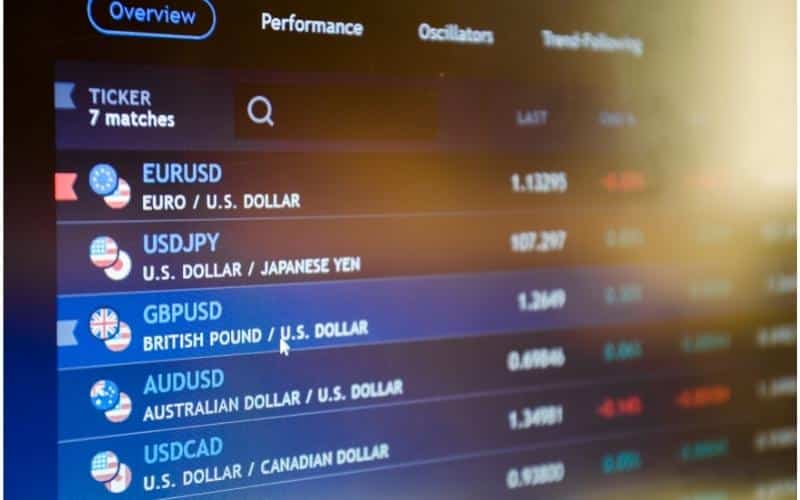The forex market involves buying and selling currencies for profit. Buying a currency pair is referred to as going long, which is done when you expect that the pair’s price will rally in the future. The opposite, selling a currency pair, is referred to as going short. This is done when you expect a currency pair’s price to fall in the near future.
How shorting works
The term and the practice of shorting is one that originated in the stock market. In the beginning, people used to buy stocks when their prices were low and sell them when their prices went up. So, when they were trending down, people who did not own the underlying stock could not sell them, nor could those who held the stocks for fear of running a loss.
Soon, brokers figured out a workaround. They started allowing traders who did not own these stocks to borrow from the holders, after which they were allowed to sell the stock. When the price went down later, they bought back the stocks at a lower price and returned them to the original holders, having made the difference in profit.
When it comes to the FX market, shorting follows the same principle, but its execution is a little different. For one, you do not borrow the currency you wish to short. Currencies are quoted in pairs, which means that shorting a pair essentially means selling it. In doing so, you’ll be taking a short position on the base currency but going long on the quote.
For instance, if you short the EURUSD pair, you sell the euros and buy the greenback. This is with the expectation that the euro will devalue against the dollar, allowing you to make a profit from your short trade.
How to place a short
As aforementioned, placing a short in forex is as simple as activating a sell order. Before you can place this trade, you need to be aware of the size of the investment you wish to trade with, the profit you’re aiming at, and the risk you’re willing to take.
First off, you’ll need to understand the concept of pips. A pip is the smallest change a pair’s price can undergo. For most pairs, a pip constitutes 0.0001 units of the second currency in the pair, which is called the quote currency. The only exception is a pair involving the JPY as the quote currency. For these, a pip is equivalent to 0.01 yen.
Next, you will need to determine the appropriate amount of capital you’re willing to invest in the trade. Currency pairs are traded in standard units called lots. The standard lot contains 100,000 units, while a mini lot comprises 10,000 units. You can also trade in micro-lots, which contain 1,000 currency units, or in some cases, nano lots of 100 units.
At the time of writing, the EURUSD pair was trading at 1.1333, which means one euro cost $1.1333. Let’s assume you wish to short a standard lot of this pair at this point and take your profit at 1.1320, a profit target 13 pips away. To find the monetary value of a pip, we divide its magnitude by the exchange rate of the pair and multiply the result by the lot size.
This becomes:
(0.0001/1.1333) * 100,000 = $8.82
This means that this short would have yielded a profit of $8.82 * 13 = $114.71, less the brokerage fees. When shorting, you may also opt to close half of your position after hitting the first profit target to cover your initial cost and letting the other half remain open to accumulate further profits. This is done when you predict that the currency pair’s price will fall further.
How to manage your risk when shorting
Risk management is a vital part of every transaction you make on the forex market. When making a long trade, hypothetically speaking, the worst that could happen is the pair’s price plummets to zero. Since the price can’t go below zero, your loss is capped at this point. For short trades, the worst-case scenario is the pair going on an exponential rally. Since prices may rise to infinity, there’s no limit to where your losses can reach.
For that reason, it is especially vital to take risk management measures when making a short trade. This may include setting a stop loss to limit your loss and using key levels of support and resistance as your entries and exits. Further, since economic news often causes rapid price moves, you should always stay updated on the news of the countries whose currency you’re trading.
Another good measure would be to utilize price alerts. These are notifications that your trading platform sends you when prices hit certain predetermined levels. This could help you avoid losses from price moves that happen when you’re not actively studying the price charts.
In a nutshell
Trading forex involves either going long or going short on a currency pair. The former means buying the pair, which you do when you predict that its price is going up. Going short, on the other hand, means selling the pair because you expect its price to fall in the future. Since currencies are quoted in pairs, every transaction involves shorting one currency while simultaneously going long on the other.
When trading a short, it is especially vital to exercise appropriate risk management, as losses from a short could end up being infinitely large. This may involve placing a stop-loss order, utilizing valid levels of support and resistance as entries and profit targets, and keeping up to date with any economic news capable of moving your pair’s price. Some platforms will allow you to set customized alerts that inform you when certain price levels are hit, which could well be the difference between a winning and losing trade.
